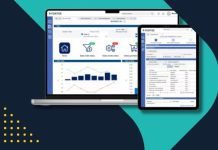Efficio
The report includes a foreword from Edward Cox, Principal, and Simon Whatson, Vice President at Efficio, which lays out the background for the report and notes the growing importance of ESG for procurement.
It is followed by an executive summary which consists of infographics that summarise the findings from the three following sections:
- ESG – A key element of the C-suite strategic agenda?
- The current challenges faced by organisations and their procurement teams
- Unlocking the potential in procurement
The fourth part delivers a ten-step roadmap for procurement teams to follow. The report concludes with a call to action for procurement functions and organisations to begin or continue their ESG journey, with 4 clear takeouts:
- ESG is a strategic priority, firmly on the C-Suite strategic agenda
- ESG ambition does not yet meet reality – ESG activity is undermined and lacks prioritisation and conviction
- ESG has not been operationalised – businesses are not working as a cohesive unit with clear roles and responsibilities, performance measures and action plans
- Procurement is a key enabler – it has a leading role to play, but we must make the value case

Edward Cox, Principal at Efficio, summarised: “For procurement teams to be successful with delivering ESG initiatives and meeting ESG-related targets, a change is required between top level CPOs and procurement teams.
“While procurement’s traditional role of delivering cost savings will remain as a priority, the goal must be for short-term success to merge with long-term sustainability. The companies that do not transition to sustainable operations run a far greater risk regarding both business operations and reputation.”
Key findings
Each section provides some interesting key findings. It highlights the growing importance of ESG as a strategic priority for investment. While digital transformation (49%) remains the highest priority, ESG (47%) is the second highest. Refreshing the age of greenwashing may end with 67% of Business leaders noting that over-promising on sustainability is a major reputational risk to the business.
However, strategic business priorities remain familiar to most business leaders focused on revenue and profit. While the business leaders are looking to grow the business, the C-Suite has a wider view citing brand recognition (82%) and employee satisfaction (81%) as the top two.
While ESG is an investment priority, few organisations have made little progress, perhaps indicating that it is not easy. Only 33% are very confident that they will meet their targets, and only 28% of procurement leaders are capturing carbon neutrality targets. This doesn’t bode well for Scope 3 metrics.
The authors pull this out as a concern. Paul Ekins OBE, Professor of Energy and Environment Policy, University College London (UCL), noted, “Corporates have become very aware of the fact that what they buy constitutes a major component of their carbon footprint. By assessing and screening suppliers, Procurement can be instrumental to the reduction of Scope 3 carbon emissions.”
Worryingly only 66% of procurement leaders are capturing cost benefits to the organisation/Quality of sourcing. That is the best metric and indicates huge room for improvement, with sustainability metric measurement at only 38%. Other challenges faced by procurement include a skills shortage (50%), and 49% of CPOs face a lack of board-level buy-in for procurement.
Procurement can drive change. However, there is a disconnect between what CPOs think and their team. For example, while 67% of CPOs believe it is within their remit to deliver on sustainability, only 44% of procurement professionals do. This is a concern with Scope 3 targets firmly within the procurement responsibility.
Enterprise Times: What does this mean
This is a comprehensive report with commentary throughout from Ekins. It is worth the read just for the interviews with key business leaders, primarily from sustainability and procurement.
Jessica Bederoff Stenvad, Sustainability Manager, Nordic Capital, neatly summarises the challenge saying, “There needs to be genuine, open discussion about the value that Procurement can bring to the whole business case, and in particular, what role Procurement can play in delivering on the company’s sustainability priorities. For example, sustainability and resilience often go hand in hand. Combining these perspectives in your procurement practices can help identify opportunities with both financial and societal impact.”
Efficio has put together a well-researched and presented work that business leaders should take the time to read. One might expect no less from one of the world’s largest procurement and supply chain consultancies. However, turning expertise into paper is not always successful.
If nothing else, the ten-step plan for sustainable procurement is worth the time spent registering and downloading the paper. The one step missing from the list. is step 0: engage with a third party that can provide the expertise to guide your organisation through each of the following steps.

























